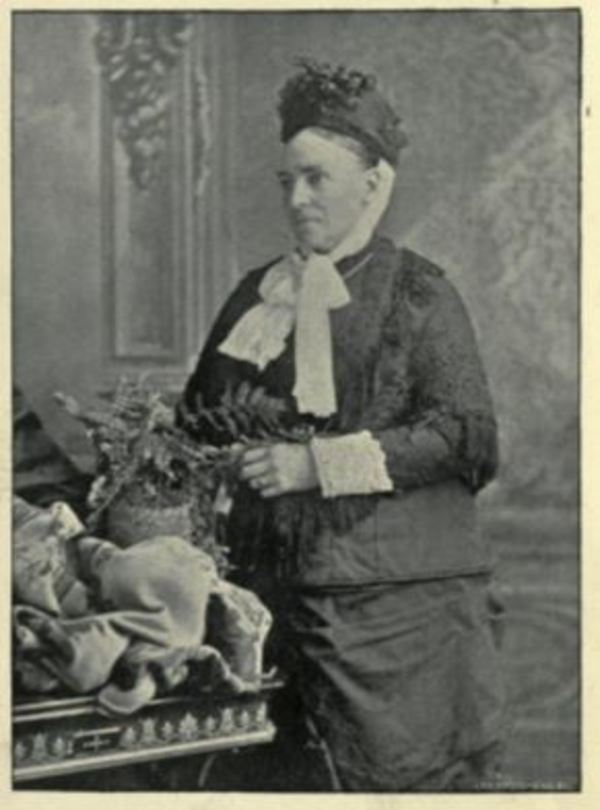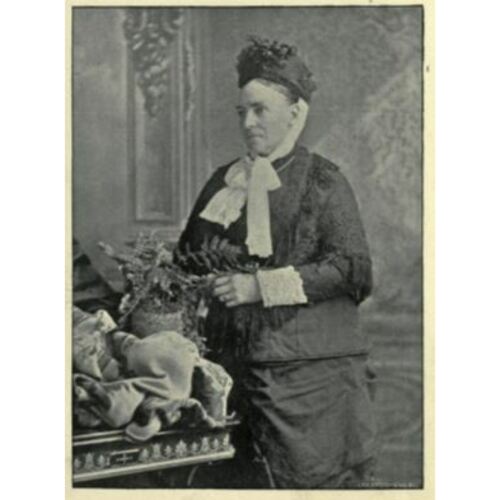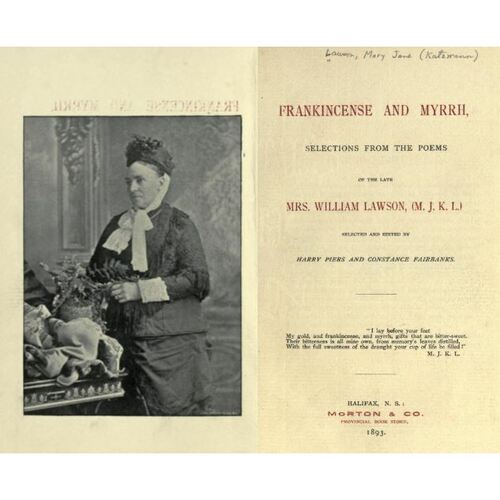As part of the funding agreement between the Dictionary of Canadian Biography and the Canadian Museum of History, we invite readers to take part in a short survey.

Source: Link
KATZMANN, MARY JANE (Lawson), poet, editor, and historian; b. 15 Jan. 1828 at Preston, N.S., daughter of Christian Conrad Caspar Katzmann and Martha Prescott; m. 31 Dec. 1868 William Lawson, a prominent merchant in Halifax, N.S., and they had a daughter; d. 23 March 1890 in Halifax.
Mary Jane Katzmann’s father, a native of Hanover (Federal Republic of Germany), was a graduate of Göttingen University. He obtained a commission in the 60th Regiment of the British army during the Peninsular War, and then settled in Nova Scotia. His wife was descended from a prominent New England planter family. Living amid cultured surroundings, Mary Jane displayed a precocious intelligence and an early interest in literature. She could read at the age of three, and, with the guidance of her family, was largely self-educated. Her early poetical efforts, which Joseph Howe* is said to have encouraged, appeared in various local newspapers.
In January 1852, at age 24, Mary Jane Katzmann became editor of the Provincial, or Halifax Monthly Magazine, and under her expert guidance it became possibly the best of the early Nova Scotian periodicals. The format and printing were superior, and the quality of the contributions was commendable. Unlike Mary Eliza Herbert*, whose Mayflower, or Ladies’ Acadian Newspaper (Halifax) had immediately preceded the Provincial, Mary Jane Katzmann tailored her publication to attract a wide audience, both male and female; she also strove to include articles of regional origin rather than selected reprints. Devoted to “advancing the welfare of mankind, by ministering to their cultural improvement, and consequently, their social happiness,” the magazine stressed material “of a purely Literary and Scientific character, nothing merely Sectarian or Political.” A true expression of the late Romantic and early Victorian intellect, the Provincial carried poetry and prose on such diverse topics as foreign travel, local history, rural idylls, science, and social conditions. It was well received by its readers but sufficient subscriptions were not forthcoming, and publication ceased with the December 1853 issue. Nothing further is known of the editor until 1866, when she was operating the Provincial Bookstore in Halifax; evidence indicates that she was an astute and capable businesswoman.
Following her marriage, Mrs Lawson relinquished the bookstore to her younger sister, and assumed the role expected of a Victorian wife. Much of her free time was devoted to charitable and social causes, particularly those associated with the Church of England; she was revered for her kindness and judicious guidance.
Her later literary efforts included the History of the townships of Dartmouth, Preston and Lawrencetown, Halifax County, N.S., for which she received the Thomas Beamish Akins Historical Prize from King’s College, Windsor, in 1887. This collection of vignettes concerning early individuals and settlement in the Dartmouth area was based on an earlier series carried in the Provincial; it remains her enduring contribution to Canadian literature. Although it relies heavily on description and anecdote, and reads much like a Victorian travelogue, the book nevertheless reveals a fine sense of historical detail and comprehension. It also succeeds in being something more than a mere recitation of dates and names; although it can in no way be compared to a modern sociological study, it does convey, in a fashion which many early regional histories lack, a colourful sense of the people and the times. Following Mrs Lawson’s death, the history was published in 1893, along with a volume of her verses, entitled Frankincense and myrrh. These poems, covering a 40-year period, reveal a woman of sympathy, sincerity, and piety. They lack, however, the keen wit of her earlier efforts, and much of their quality is marred by sentimentality and effusiveness.
Although Mrs Lawson has been remembered primarily for her single volume of social history, the significance of her earlier career cannot be overlooked. In an age when women accomplished little beyond the circle of home and charity, her success, although limited to the provincial sphere, was threefold: as the capable and youthful editor of a successful, if short-lived, periodical, as an able businesswoman in a circle dominated by male initiative, and as one of the first native Nova Scotian women to achieve literary recognition, and certainly the first to make an enduring impression. Her contribution to the colonial intellectual scene is one which cannot be ignored.
[Mary Jane Katzmann was the editor of the Provincial, or Halifax Monthly Magazine, 1852–53. Her History of the townships of Dartmouth, Preston and Lawrencetown, Halifax County, N.S., was edited by Harry Piers and published in Halifax in 1893. Piers and Constance Fairbanks edited Frankincense and myrrh, selections from the poems of the late Mrs. William Lawson (M.J.K.L.), also published in Halifax in 1893. An obituary published in the Acadian Recorder, 24 March 1890, and a paper by P. R. Blakeley, “Some forgotten women writers of Nova Scotia,” read before the Halifax Library Club, 8 March 1950, were also useful. l.k.k.]
Cite This Article
Lois K. Kernaghan, “KATZMANN, MARY JANE (Lawson),” in Dictionary of Canadian Biography, vol. 11, University of Toronto/Université Laval, 2003–, accessed March 29, 2025, https://www.biographi.ca/en/bio/katzmann_mary_jane_11E.html.
The citation above shows the format for footnotes and endnotes according to the Chicago manual of style (16th edition). Information to be used in other citation formats:
| Permalink: | https://www.biographi.ca/en/bio/katzmann_mary_jane_11E.html |
| Author of Article: | Lois K. Kernaghan |
| Title of Article: | KATZMANN, MARY JANE (Lawson) |
| Publication Name: | Dictionary of Canadian Biography, vol. 11 |
| Publisher: | University of Toronto/Université Laval |
| Year of revision: | 1982 |
| Access Date: | March 29, 2025 |




